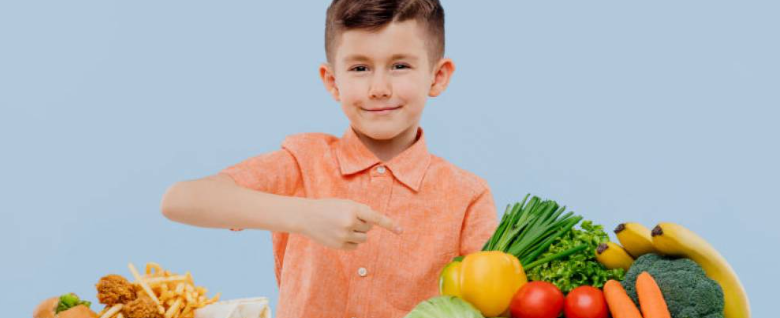Nutritional Deficiencies Among the Poor in India (GS Paper 2, Health)

Introduction
- The Household Consumption Expenditure Survey (HCES) for 2022-23, conducted by the National Sample Survey Office, provides valuable data on household consumption patterns, including food and non-food expenditures.
- This survey aims to evaluate the nutritional adequacy and poverty levels across India by analyzing calorific intake and expenditure patterns.
Defining Poverty and Measuring Nutrition
Defining the ‘Poor’
Historical Perspectives:
- Lakdawala Committee (1993): Established the concept of poverty based on calorific norms, defining the poverty line as the minimum calorific intake required for survival and a basic standard of living. The norms were set at 2,400 kcal/day for rural areas and 2,100 kcal/day for urban areas.
- Tendulkar Committee (2009): Modified the poverty line approach by focusing on consumption expenditures without a specific calorific norm. This approach considered basic needs beyond just calories, including health and education.
- Rangarajan Committee (2014): Expanded the definition to include broader aspects of living standards such as clothing, housing, and transportation, adjusting the poverty line to reflect a more comprehensive measure of deprivation.
Calorie Norms and Poverty Line
- Lakdawala Norms: These norms were instrumental in setting poverty thresholds, assuming that a basic caloric intake was essential for maintaining health. The poverty line was thus anchored to these calorie requirements.
- Nutritional Standards: The calorie norms serve as a benchmark for assessing whether households meet their basic dietary needs. Deviations from these norms can indicate nutritional deficiencies.
Methodology
Calorie Requirement Calculation
- ICMR-NIN Guidelines: The Indian Council of Medical Research (ICMR) and the National Institute of Nutrition (NIN) provide recommended energy requirements based on different age, sex, and activity levels. These recommendations are used to calculate the average daily per capita calorie requirement for a healthy life.
- Data Analysis: The survey data is segmented into 20 fractile classes based on Monthly Per Capita Consumer Expenditure (MPCE). This segmentation helps in evaluating the calorie intake and expenditure patterns across different income groups.
Minimum Expenditure for Healthy Life
- Food and Non-Food Expenditure: The analysis calculates the minimum required expenditure for both food and non-food items necessary to maintain a healthy life. This includes evaluating the cost of achieving adequate nutrition as well as covering essential non-food expenses.
- State-Specific Adjustments: Given regional price variations, the all-India threshold is adjusted to reflect state-specific cost differences. This ensures a more accurate representation of poverty thresholds across different states and union territories (UTs).
Proportion of ‘Poor’ and Nutritional Deficiency
Proportion of ‘Poor’
- Estimates: According to the analysis, the proportion of the poor is estimated at 17.1% in rural areas and 14% in urban areas. These estimates are derived based on the MPCE thresholds adjusted for state-specific price indices.
- Calorie Intake Shortfall: The average calorie intake among the poorest populations falls short of the recommended levels:
- Rural Areas: The per capita calorie intake for the poorest 5% is about 1,564 kcal/day, which is significantly lower than the required 2,172 kcal/day.
- Urban Areas: The average intake is approximately 1,607 kcal/day for the poorest, compared to the recommended 2,135 kcal/day.
Impact of Non-Food Expenditure
- Broader Measurement Effects: Including the non-food expenditure of the poorest 10% in the analysis raises the poverty threshold, reflecting a more comprehensive measure of deprivation. This adjustment increases the proportion of deprived individuals to 23.2% in rural areas and 19.4% in urban areas.
- Increased Thresholds: The total MPCE required for a healthy life becomes ₹2,395 for rural areas and ₹3,416 for urban areas, highlighting a significant gap between actual and required expenditures.
Calorie Intake Deficiency
- Average Intake vs. Requirements: The calorie intake of the poorest segments is substantially lower than recommended, indicating severe nutritional deficiencies. The gaps in calorie consumption contribute to poor health outcomes and malnutrition among the poorest.
Recommendations
Government Welfare Programs
- Existing Programs: The Indian government has implemented various welfare schemes aimed at reducing poverty and improving health, such as the National Food Security Act (NFSA) and the Pradhan Mantri Awas Yojana (PMAY). However, these programs may not fully address the nutritional deficiencies observed among the poorest populations.
Recommendations for Nutritional Schemes
- Targeted Nutritional Schemes: There is a need for targeted nutritional programs that address the specific deficiencies faced by the poorest. These could include supplementary feeding programs, improved public distribution systems, and initiatives to enhance food security.
- Expanding and Strengthening Programs: Strengthening existing welfare schemes and ensuring their effective implementation can help bridge the nutritional gap. This may involve better targeting, increased funding, and more comprehensive support for the poorest households.
Conclusion
- By addressing these gaps and enhancing nutritional programs, India can work towards improving the dietary intake and overall health of its poorest populations, thereby contributing to a more equitable and healthier society.


